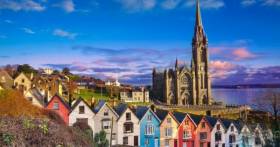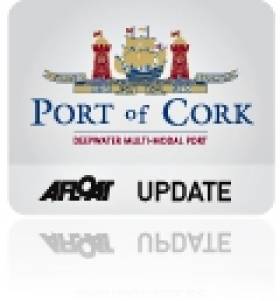Displaying items by tag: Australia Day
In Cork Harbour the town of Cobh is bracing itself for the arrival of some 1,500 Australians ahead of the town's annual 'Australia Day' celebrations.
The cruiseship Sea Princess, EchoLive.ie writes, will be making a pitstop in Cork Harbour on July 11 as part of its 107-day round-the-world cruise.
Cobh, which was recently named one of the 25 most beautiful towns in Europe by Conde Nast, will be just one of the 36 ports it visits on the 59,000km journey. The event will be marked with festivities and christened ‘Australia Day in Cobh.’ It will include festivities to mark the special occasion including Irish dancing, market stalls and a performance from trad band Gaelic Brew on the bandstand.
Passengers will later be treated to a musical farewell from Cobh Confraternity Band.
For more including the role of the Australian Ambassador to Ireland click here.
Port of Cork All Set for Australia Day in Cobh
#SydneyWorldCruise – Tomorrow is Australia Day and the Port of Cork will welcome up to 1500 from Down Under as well as 400 Kiwis to Cobh as part of their Sydney to Sydney World Cruise on board Princess Cruises Sea Princess.
As the passengers step ashore from the 77,499 tonnes vessel's maiden voyage to Cobh, they are sure to receive a very warm Irish welcome as Cobh Tourism presents Australia Day with the weather forecast to match.
In the morning when Sea Princess arrives there will be a formal port welcome on board to the Captain attended by Port Management and the Australian Ambassador to Ireland Dr. Ruth Adler.
Following this, there will be a civic welcome ashore with the Captain and Cruise Director of Sea Princess and the Australian Ambassador at 11.30 am in Cobh Heritage Centre, adjacent to the quayside.
With such a rich and poignant history of emigration from the Port of Cork, particularly from Cobh (formerly Queenstown) to Australia, this "special Irish Australia Day" will not only mark the visit of this spectacular cruise liner but will also remind visitors of the thousands who left or were deported from Ireland bound for a life down under. With this in mind, a "Blessing of the Bonnets" ceremony will take place in memory of all convict women transported from Ireland to Australia.
Captain Michael McCarthy, Commercial Manager Port of Cork has for some time being working with Princess Cruises to secure the call of Sea Princess on her world cruise. With so many Australian roots here, the Port of Cork was thrilled when they received confirmation that the World schedule included Cobh.
Of the 60 cruise liners calling to the Port of Cork in 2013, 11 vessels carry the very distinctive brand of Princess Cruises and they alone will bring over 30,000 visitors to Cork Harbour and its regional attractions. In addition, August is set to be one of the busiest months on record for the port, with 21 liners calling.
With so much happening in Cobh on Sunday, cruise passengers and visitors to Cobh are set to have a fantastic day with local traditional music and dance, fascinating Australian themed shop window displays, sizzling barbecues, food stalls and local arts and crafts stalls on display.
A performance by the Band 1 Southern Brigade will take place at 2.30 pm in the town park and will be followed by more local entertainers. Captain McCarthy stated that "the tremendous work undertaken by Cobh Tourism and the team spirit of all organisations and Councils working together has put Cobh and the entire Cork region a "must see destination" on the cruise companies calendar.
The Cobh Confraternity Brass and Reed Band will play on the quayside as the Sea Princess sails to continue its 104 night odyssey around the World.
Will the traditional "Anchors Aweigh" be replaced by "Tie Me Kangaroo down Sport" as 2000 happy passengers are given a traditional Cobh farewell with white handkerchiefs and Australian and Irish flags waving.































































